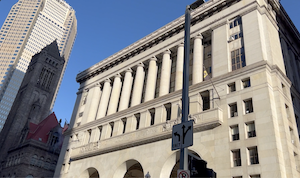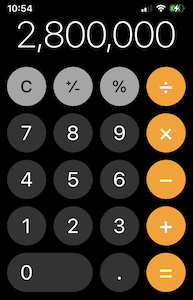 In Pennsylvania, there’s no cap on punitive damages that can be awarded for either reckless or intentional conduct, except in the area of medical malpractice, where punitive damages cannot exceed 200% of actual damages.
In Pennsylvania, there’s no cap on punitive damages that can be awarded for either reckless or intentional conduct, except in the area of medical malpractice, where punitive damages cannot exceed 200% of actual damages.
In State Farm v. Campbell, 538 U.S. 408 (2003), our United States Supreme Court ruled that the punitive damages cannot be “excessive,” relative to the amount of actual damages. However, a ratio of 9:1 (punitive damages to actual damages) was acceptable. So for example, with actual damages of 100K, an award for punitive damages for 900K would be OK.
But in a key trade secret case, Bert Co. v. Turk, 298 A.3d 44 (Pa. 2023), the Pennsylvania Supreme court suggested the ratio could be even higher. There, the court found acceptable a ratio of 11.2:1 (with punitive damages totaling over 10 times the amount of compensatory damages).
The Facts in Burt Co. v. Turk
 In Bert Co. v. Turk, the Plaintiff obtained an award for punitive damages for the alleged theft of trade secrets, among other things. But an award for punitive (or “exemplary”) damages are available in other types of cases, such as:
In Bert Co. v. Turk, the Plaintiff obtained an award for punitive damages for the alleged theft of trade secrets, among other things. But an award for punitive (or “exemplary”) damages are available in other types of cases, such as:
- fraud,
- reckless driving that causes personal injury,
- reckless conduct that damages property, or
- civil assault – physically harming someone recklessly or on purpose.
For the sake of this article, we’ll focus on the facts in Bert Co. v. Turk, 298 A.3d 44 (Pa. 2023), but the ruling extends to all cases in PA where punitive damages are sought.
Intentional Interference With Contractual Relations
In Bert Co. v. Turk, supra, at least one Northwest employee — who FNIA had allegedly poached — had an NDA (nondisclosure agreement) with Northwest. Thus, Northwest brought an action against FNIA for not only misappropriation of trade secrets, but also tortious interference with Northwest’s contracts with its employees and customers. On this subject, PA law provides:
“Intentional interference with contractual relations requires the following elements: (1) the existence of a contractual relationship; (2) an intent on the part of the defendant to harm the plaintiff by interfering with that contractual relationship; (3) the absence of a privilege or justification for such interference; and (4) damages resulting from the defendant’s conduct.” Hennessy v. Santiago, 708 A.2d 1269, 1278 (Pa. Super. Ct. 1998) (citing Triffin v. Janssen, 626 A.2d 571, 574 (1993)).
The Jury’s Evaluation of the Claims
In total, Northwest asserted claims for:
“(1) breach of contract and fiduciary duties and theft of trade secrets against its ex-employees; (2) unfair competition against First National; and (3) misappropriation of trade secrets, tortious interference with contract, and civil conspiracy against Turk and First National.”
The trial by jury occurred on December 10, 2018, resulting in verdicts on December 21, 2018 against not only FNIA, but also other entities and individuals involved: Turk, FNB, and FNB Corporation (collectively the “Defendants”). The jury The jury awarded Northwest compensatory damages in the following amounts:
Turk Breach of Contract, $164,943
Breach of Fiduciary Duty, $90,000
Turk, FNB Corp., FNB, FNIA Civil Conspiracy, $164,943
FNB Corp., FNB, FNIA Unfair Competition, $250,000
The jury also awarded a total of $2.8 million in punitive damages, imposed per-defendant as follows:
Turk Breach of Contract & Fiduciary Duty, Civil Conspiracy $ 300,000 FNB Corp. Civil Conspiracy and Unfair Competition $ 500,000 FNB Civil Conspiracy and Unfair Competition $ 500,000 FNIA Civil Conspiracy and Unfair Competition $1,500,000
On appeal, the Superior Court agreed with the jury’s verdict.
FNIA Appeals to the PA Supreme Court: Punitive Damages Were Excessive?
 Here’s where it gets complicated. The trial court assessed each Defendant “jointly and severally” liable for the various verdicts. As such — and quite potentially — FNIA could be liable for a total amount of all punitive damages compared to its individual liability, which could exceed the 9:1 ratio (or cap) on punitive damages to actual damages, set by the US Supreme Court.
Here’s where it gets complicated. The trial court assessed each Defendant “jointly and severally” liable for the various verdicts. As such — and quite potentially — FNIA could be liable for a total amount of all punitive damages compared to its individual liability, which could exceed the 9:1 ratio (or cap) on punitive damages to actual damages, set by the US Supreme Court.
However, the PA Supreme Court disagreed with FNIA’s analysis, holding that you don’t compare the total amount of punitive damages (against all Defendants) to the judgments against all Defendants, combined. Rather, you look at the damages assessed (punitive and compensatory) per Defendant. Here’s how the PA Supreme Court put it:
The Superior Court calculated the punitive to compensatory damages ratio using a per-defendant approach, as calculated by the trial court, which resulted in ratios ranging from 1.81 to 1 to 6 to 1, rather than a per-judgment approach, which resulted in a ratio of 11.2 to 1. …
[W]e generally endorse the per-defendant approach as consistent with federal constitutional principles that require consideration of a defendant’s due process rights. Further, we conclude that under the facts and circumstances of this case, it was appropriate to consider the potential harm that was likely to occur from the concerted conduct of the defendants in determining whether the measure of punishment was both reasonable and proportionate. Thus, we affirm the order of the Superior Court.
And there you have it.
The $2.8 million in total punitive damages — when assessed per defendant — relative to said defendant’s individual responsibility (as a ratio of punitive to his portion of compensatory damage) — did not violate the 9:1 ratio (or limit) set by the US Supreme Court.
Understanding Punitive Damages
It’s important to understand that just because a plaintiff can seek punitive damages, it doesn’t mean she should. Click here to understand the nature of punitive damages, when those can be recovered, and why it might make more sense to stop short of seeking exemplary damages.
Trying to Move Assets to Avoid the Liability
A company facing such a significant judgment could be tempted to transfer assets away for less than fair market value, to avoid paying the creditor. However, a creditor can void such transactions based on PA’s Voidable Transfer Act, formerly PA’s Uniform Fraudulent Transfer Act (UFTA). Click here for more.
Let’s Get Started
It pays to hire a Pittsburgh attorney to evaluate how punitive damages can come into play in different kinds of law. Contact us to discuss any punitive damage claim or defense in Western PA today!
412.342.0992
